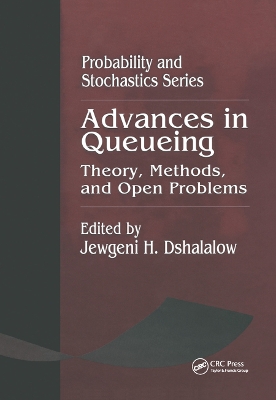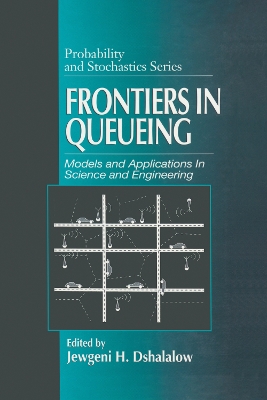Probability and Stochastics
2 primary works
Book 4
Advances in Queueing Theory, Methods, and Open Problems
by Jewgeni H. Dshalalow
The progress of science and technology has placed Queueing Theory among the most popular disciplines in applied mathematics, operations research, and engineering. Although queueing has been on the scientific market since the beginning of this century, it is still rapidly expanding by capturing new areas in technology. Advances in Queueing provides a comprehensive overview of problems in this enormous area of science and focuses on the most significant methods recently developed.
Written by a team of 24 eminent scientists, the book examines stochastic, analytic, and generic methods such as approximations, estimates and bounds, and simulation. The first chapter presents an overview of classical queueing methods from the birth of queues to the seventies. It also contains the most comprehensive bibliography of books on queueing and telecommunications to date. Each of the following chapters surveys recent methods applied to classes of queueing systems and networks followed by a discussion of open problems and future research directions.
Advances in Queueing is a practical reference that allows the reader quick access to the latest methods.
Book 7
Queueing systems and networks are being applied to many areas of technology today, including telecommunications, computers, satellite systems, and traffic processes. This timely book, written by 26 of the most respected and influential researchers in the field, provides an overview of fundamental queueing systems and networks as applied to these technologies.
Frontiers in Queueing: Models and Applications in Science and Engineering was written with more of an engineering slant than its predecessor, Advances in Queueing: Theory, Methods, and Open Problems. The earlier book was primarily concerned with methods, and was more theoretically oriented. This new volume, meant to be a sequel to the first book, was written by scientists and queueing theorists whose expertise is in technology and engineering, allowing readers to answer questions regarding the technicalities of related methods from the earlier book.
Each chapter in the book surveys the classes of queueing models and networks, or the applied methods in queueing, and is followed by a discussion of open problems and future research directions. The discussion of these future trends is especially important to novice researchers, students, and even their advisors, as it provides the perspectives of eminent scientists in each area, thus showing where research efforts should be focused. Frontiers in Queueing: Models and Applications in Science and Engineering also includes applications to vital areas of engineering and technology, specifically, telecommunications, computers and computer networks, satellite systems, traffic processes, and more applied methods such as simulation, statistics, and numerical methods. All researchers, from students to advanced professionals, can benefit from the sound advice and perspective of the contributors represented in this book.

